SED2011 – Science Hangover: A Visit to NASA’s Goddard Space Flight Center and the National Air and Space Museum
Saturday was an unbelievable day of adventure and science at NASA Goddard Space Flight Center. While I might have had some bumps in the road to get there, persistence lead to success and I made it… only a couple of hours late. And clearly this entry will not be about food, and I’m not an astrophysicist, and I have a terrible memory, so any information in here may be wrong, or out of order.
I joined up with the rest of the NASATweeps at the Smithsonian National Museum of Space and Aviation, and while I’ve been there before, this visit was extra special. Not just because it was a NASAtweetup (though that part was really cool), but because of the additional information we received on our customized tour from various experts at the Smithsonian.
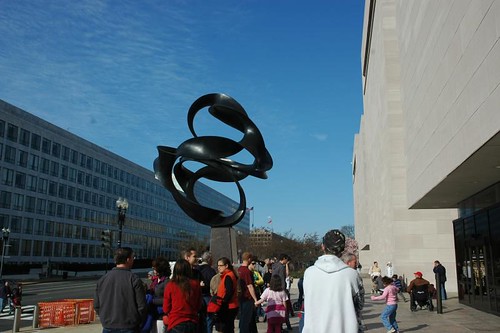
I missed the IMAX 3D show of The Sun, but following the tweets while everyone was watching, made it sound like a really exciting IMAX, made possible by STEREO (Solar TErrestrial RElations Observatory) Satellites developed/built in one of the Goddard Space Flight Center clean rooms (which we would look at later).
I joined up with the Green Team (arguably the best) at the mars mapping discussion station, and took a look at some of the images taken with the HiRISE (High Resolution Imaging Science Experiment) camera on the NASA’s Mars Reconnaissance Orbiter.
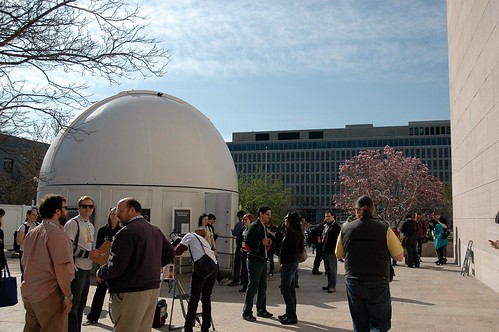
Then it was time to move on and head outside to the Observatory area, where they had several telescopes pointed at the sun so we could see the sun and solar prominences (set up so we didn’t burn our retinas, remember kids don’t look directly at the sun! hee hee) there was a Calcium -K Telescope which was my favourite, since it filters out all but the purple light (coming from excited calcium atoms in the Sun’s atmosphere) from the sun, resulting of course in a purple image. There were also QR codes linking to the Public Observatory Project, I was going to only post the image of the QR code, but it’s just easier if I include the link!
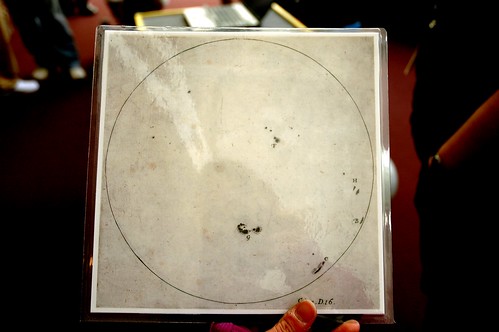
We came back inside and heard about the early astronomy of Galileo and how his observations of the motion of sunspots across the suns surface led to the discovery of the sun’s rotation. Also, an interesting point was mentioned that the “elliptical” rotation we’ve seen in textbooks and diagrams isn’t entirely accurate, or rather, it is accurate but “planetary orbits aren’t as elliptical as in textbooks due to errors in 3D/2D perception”. At this station we also had the opportunity to hold a piece of the Allende meteorite (which you can also see at the Museum of Natural History), a carbonaceous chondrite that could be over 4 billion years old. Awesome!

Dr. David DeVorkin, the curator of Astronomy and space science at the Smithsonian, gave us a quick rundown of SkyLab, the evolution of digital photography and some of the STEREO satellite images.
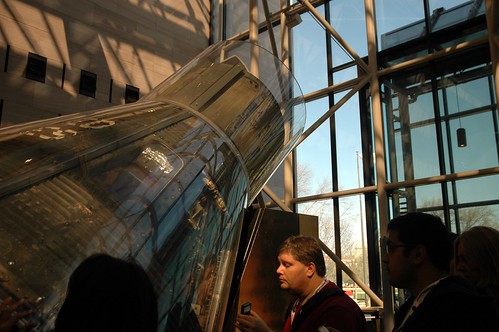
Next was a very lively discussion at the Mercury “Friendship 7”, the actual spacecraft that John Glenn Jr was in when he orbited around the Earth as the first American in Space. We heard a little about Soviet cosmonaut Yuri Gagarin, the first person to travel in space on April 12, 1951. Made me think of the special event Goddard is having in honor of Yuri next month called Yuri’s Night.
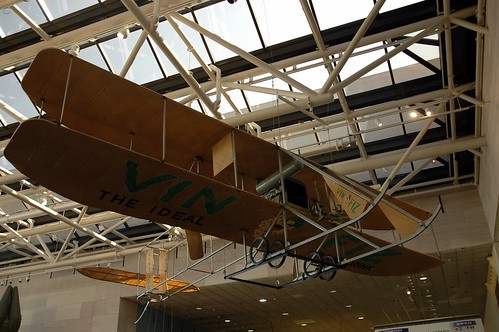
I missed the next couple of stations in aviation because I went off in search for a restroom that wasn’t under construction (and found a very long line), we grabbed a group photo on the steps of the Smithsonian, and it was back on the bus, and off to Goddard for lunch and to take part in the NASA EDGE live stream.
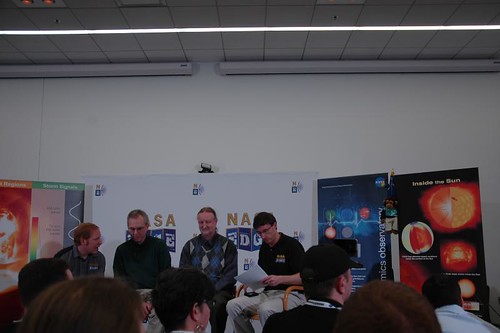
I’m glad I packed a bunch of food with me, there were stacks and stacks of pizza, that were left uneaten (by me) for obvious reasons. After lunch we piled into a room to watch the very hilarious and informative Nasa Edge folks doing their thing. They spoke with a variety of Subject Matter Experts and big names in astronomy, the vodcast will be up with highlights in a little while. I’ll be looking out for it, every once and a while you can hear me laugh, or see half a pigtail.
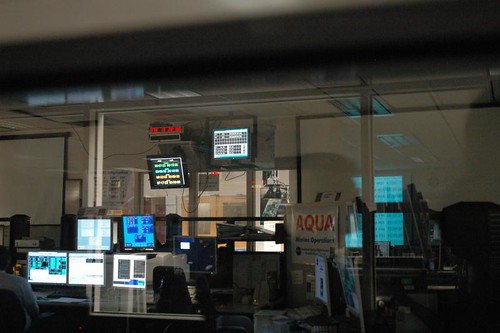
After that it was back on the bus and off to Building 32 mission control where we spoke to two very smart very cool people involved in instrumentation and propulsion (Caitlin Bacha, a propulsion engineer has a twitter @SpacePlumr). Building 32 is home to the EOSDIS (Earth Observing System Data Information System) which contains operations centers in which EOS (Earth Observing System) and Landsat program spacecraft are monitored and controlled. There were actually people working inside, so we had to be quiet, but it was cool looking into where some space magic happens. “It’s a good thing when there is little excitement in these rooms”.
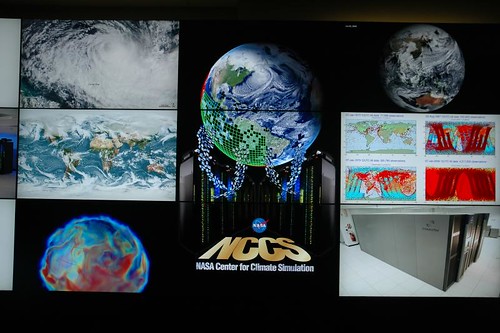
Then it was time to head back on the bus and go to Building 28, home of a few things, but our target was the Center for Climate Simulation (NCCS). I think the most exciting thing I took away from that discussion was the amazing potential of the NCCS info being open and more partnerships forming between NCCS and other open climate data groups that already exist. Then of course, my next step of excitement was heading inside the server room in building 28, while I’ve been in countless ones before, it’s always exciting being in ones I have no business being in.
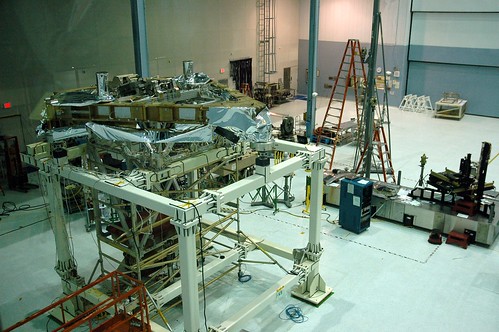
After all of those buildings it was time to head into Building 29, which is the Spacecraft Systems Development and Integration Facility, with one of the biggest clean rooms in the world. It’s the spot for integrating and testing flight hardware, there is a giant room with a 120-foot-diameter centrifuge that can accelerate a 2.5-ton payload up to 30 Gs. This building also played a major role in the Hubble Space Telescope Service Missions. It was such a huge building, and there was so much to see and do.
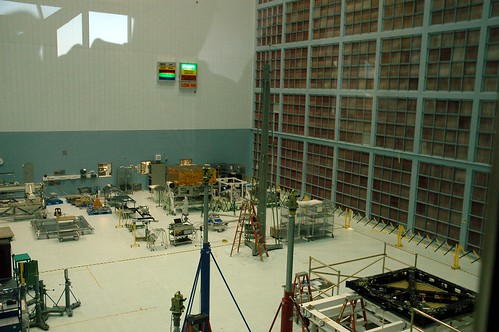
When we entered we went upstairs and looked through a big window into a giant clean room, it was amazing. Just a massive space, full of projects on the go and one full wall lined with specialized hepafilters.
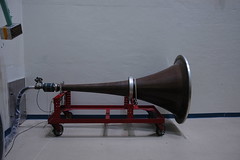
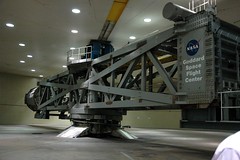
We actually had the opportunity to check out sections that people normally don’t get to see. Some of the production floor, we stood inside the the acoustics testing chamber, and that giant centrifuge I mentioned above? Yeah, we wandered around inside (and even took a group photo!)
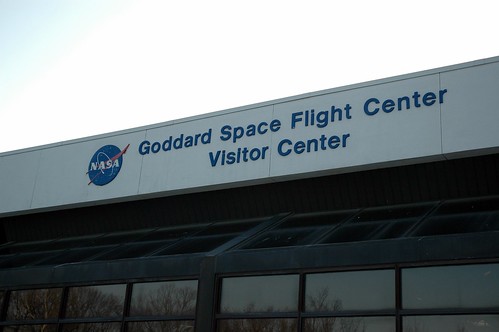
Afterwards we went back to the Visitor’s Center for more food and entertainment and wait to fling lasers at the moon. And I’m not even joking (okay, only a little bit, but there were lasers, and they were directed at the moon and the sky). Over all, I had such a wonderful time, I would recommend everyone try for a NASAtweetup if they have the time or chance to do it. I’ve really admired NASAs presence on social media (especially on twitter, I’m following at least ten different NASA accounts that provide different info… I like being informed! Follow them! They are bursting with information!)
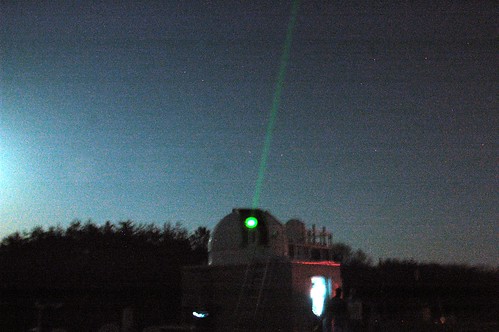
Dude, you saw some COOL STUFF!